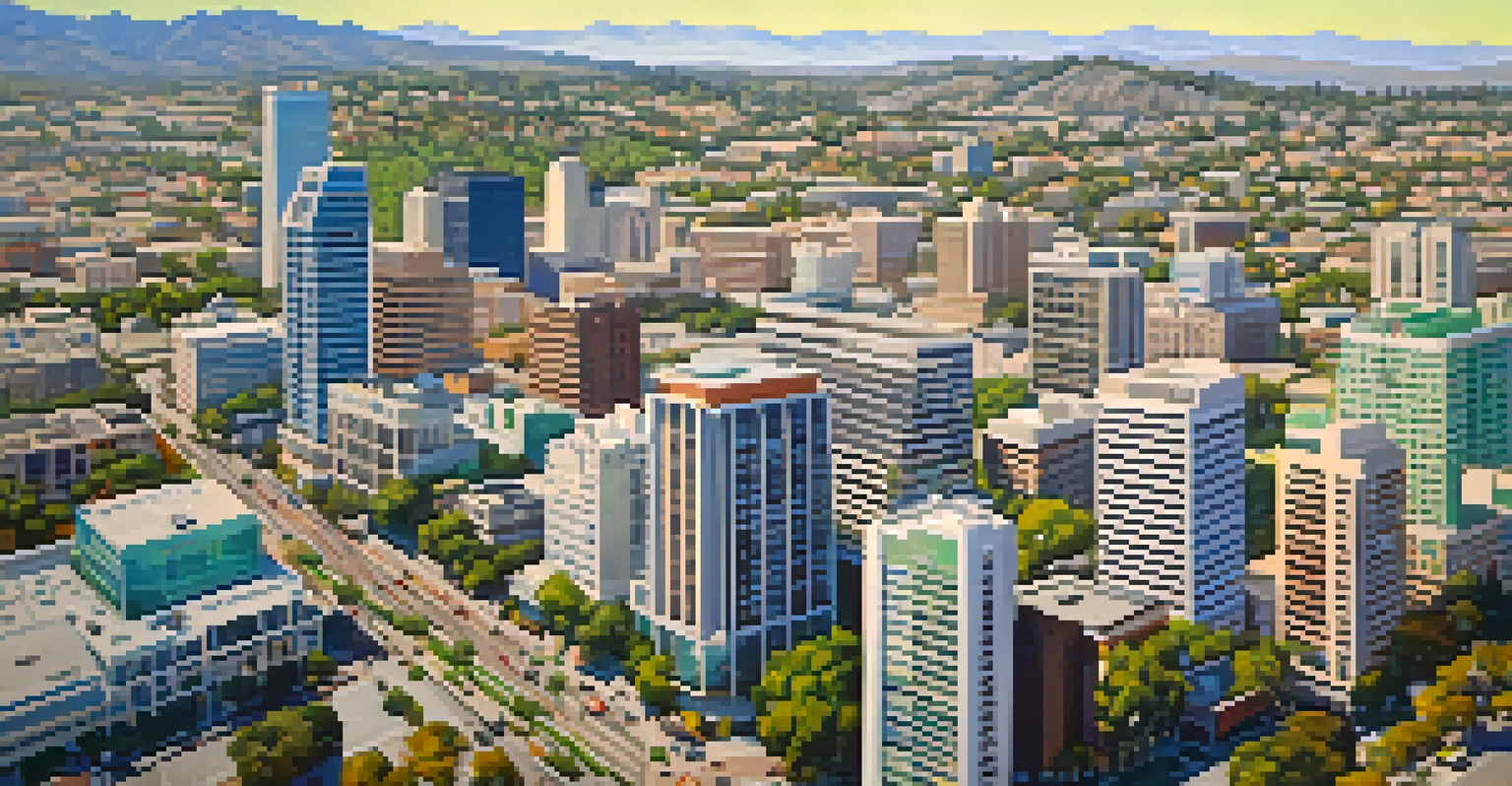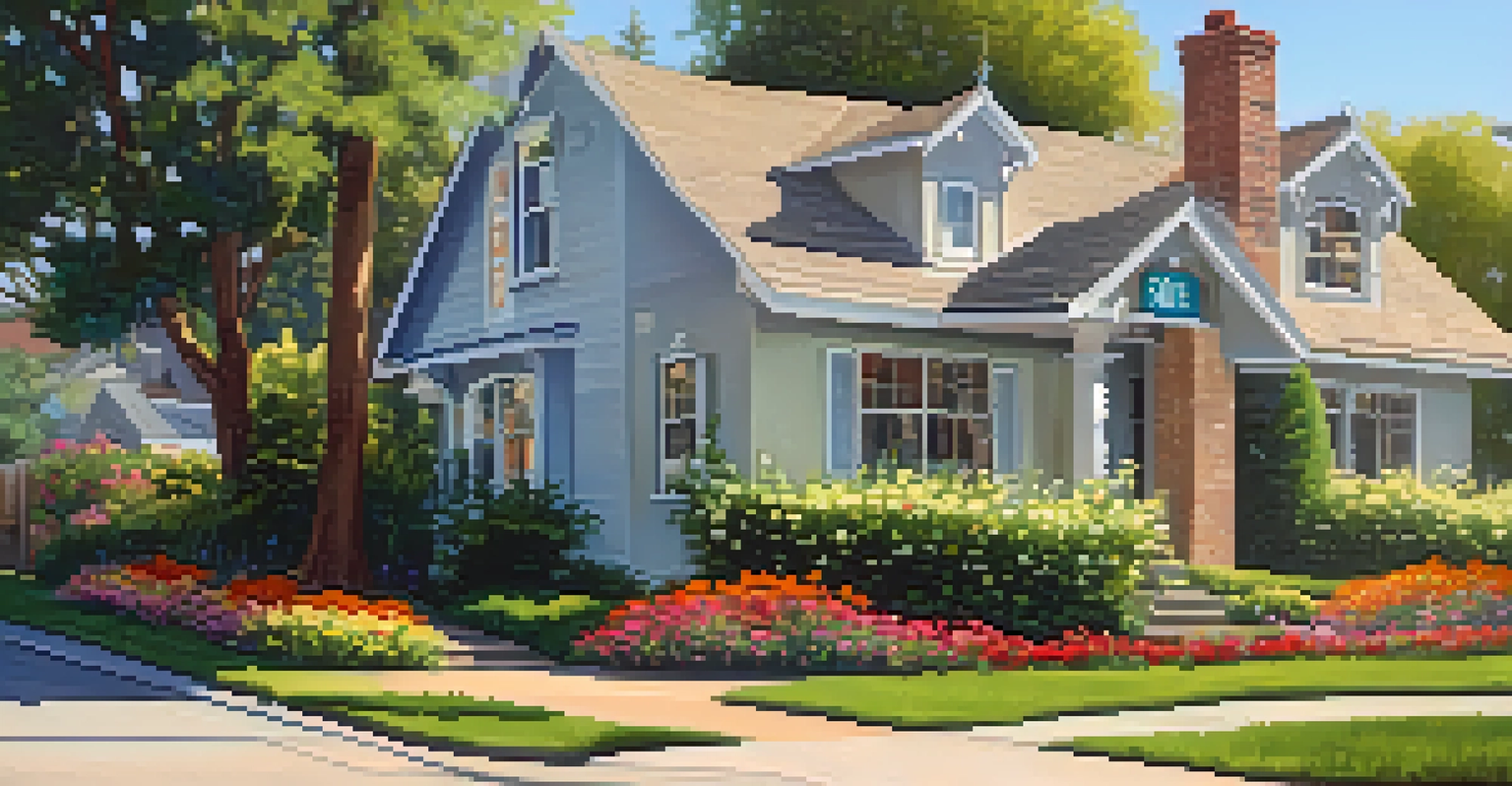The Influence of Interest Rates on San Jose Housing

Interest Rates: The Backbone of Housing Affordability
Interest rates play a crucial role in determining housing affordability in San Jose. When interest rates are low, borrowing becomes cheaper, allowing more individuals to enter the housing market. This influx of buyers can drive up home prices, creating a competitive landscape that challenges affordability.
Interest rates are like the weather: they influence our decisions but are often out of our control.
Conversely, when interest rates rise, the cost of borrowing increases, which can lead to fewer buyers in the market. This slowdown can stabilize or even lower home prices, making homes more accessible for those who remain interested. Understanding this relationship is key for potential buyers and investors alike.
Ultimately, interest rates serve as a barometer for housing demand. Those looking to buy or sell in San Jose need to keep a close eye on these rates to make informed decisions about their investments.
How Rising Interest Rates Affect Home Prices
As interest rates climb, the immediate effect can often be seen in home prices. Higher rates may deter first-time buyers from entering the market, leading to a decrease in overall demand. This shift can put downward pressure on prices, making homes more affordable for those who are still able to purchase.

For homeowners considering selling, rising interest rates can create a dilemma. They might find it challenging to sell their homes at the price they desire, especially if buyers are constrained by higher mortgage costs. This can lead to a stagnation in the market as sellers hold off on listing their properties.
Interest Rates Impact Housing Affordability
Low interest rates make borrowing cheaper, boosting housing demand, while high rates can reduce affordability and stabilize prices.
In San Jose, where the housing market is already competitive, rising interest rates could introduce a period of adjustment. Buyers may need to recalibrate their expectations, while sellers might have to reassess their pricing strategies to attract interest.
The Impact of Federal Reserve Policies on Local Markets
The Federal Reserve's decisions regarding interest rates can have a profound effect on local housing markets like San Jose. When the Fed raises rates to combat inflation, it often triggers a chain reaction that affects mortgage rates across the board. This can lead to increased costs for borrowers, influencing their purchasing power.
In the world of real estate, timing is everything, and interest rates are a key element of that timing.
Local economies are often sensitive to these shifts, especially in tech-focused regions like San Jose, where job security and salaries are closely tied to the housing market. If higher rates lead to a slowdown in hiring or job growth, the ripple effects can further impact housing demand and pricing.
Thus, understanding the broader economic landscape and the Fed's role in it is essential for anyone navigating the San Jose housing market. Buyers and sellers alike must remain vigilant and informed about these external influences to make strategic decisions.
Investment Opportunities Amidst Changing Rates
For savvy investors, changing interest rates can signal new opportunities in the housing market. When rates rise and home prices begin to stabilize or decrease, it can present a chance to purchase properties at a more favorable price. This strategy can yield significant returns once the market rebounds.
Moreover, investors might consider diversifying their portfolios by exploring rental properties. As fewer people are able to buy homes due to high interest rates, the demand for rental units often increases, providing a steady income stream. This shift can be particularly beneficial in areas with strong job growth, like San Jose.
Rising Rates Challenge Home Sellers
Higher interest rates can deter buyers, leading to a stagnant market as sellers struggle to achieve their desired prices.
However, it's essential for investors to conduct thorough research and financial planning. Understanding local market trends, property valuations, and potential rental yields will help mitigate risks and maximize profits in a fluctuating interest rate environment.
The Role of First-Time Homebuyers in the Market
First-time homebuyers play a pivotal role in San Jose's housing landscape, particularly when interest rates are low. These buyers often bring fresh enthusiasm and energy to the market, eager to purchase their first home. However, rising interest rates can significantly impact their ability to secure financing.
As borrowing costs increase, many first-time buyers may find themselves priced out of the market. This can lead to a decline in demand for entry-level homes, which often drives homebuilders and sellers to reconsider their pricing strategies. It's a delicate balance that reflects the broader economic conditions.
For those looking to buy for the first time, understanding the implications of interest rates is crucial. Whether considering fixed or adjustable-rate mortgages, being informed can help navigate the complexities of the market and make the dream of homeownership a reality.
The Long-Term Effects of Interest Rate Trends
The long-term effects of interest rate trends can significantly shape San Jose's housing market over time. Sustained periods of high rates can lead to a more stable, albeit slower-growing, market environment. In contrast, prolonged low rates may fuel rapid price increases and a surge in home construction.
These trends can influence not just buyers and sellers, but also local economies and communities. For instance, a healthy balance of affordable housing options can encourage population growth and economic diversification, while a market dominated by high prices may lead to displacement and socioeconomic shifts.
First-Time Buyers Face Financing Hurdles
Rising borrowing costs can significantly impact first-time homebuyers, potentially pricing them out of the market.
Therefore, it's essential for stakeholders—be they policymakers, developers, or community leaders—to monitor interest rates and their broader impact. By understanding these dynamics, they can work together to create a balanced housing market that serves the needs of all residents.
Navigating the Future of San Jose Housing
As we look to the future of San Jose's housing market, the influence of interest rates will undoubtedly remain a key consideration. Buyers, sellers, and investors must stay informed about economic indicators and trends that could impact their decisions. A proactive approach can help them navigate the complexities of the market more effectively.
Additionally, community engagement plays a vital role in shaping housing policies and initiatives. By fostering open dialogues about housing needs and affordability challenges, residents can advocate for solutions that address the entire community's interests.

Ultimately, understanding the interplay between interest rates and the housing market is essential for anyone involved in San Jose's real estate landscape. With the right knowledge and tools, individuals can adapt to changes and seize opportunities as they arise.